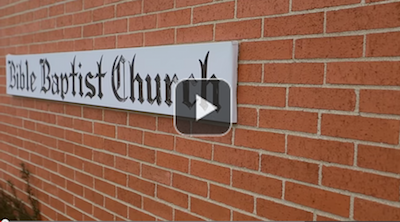JUNE 16, 2019
THE CRUCIFIXION (PART II CONT.)
INTRODUCTION:
1. We have noted how carefully John in his record of the crucifixion documents the fulfillment of numerous prophetic words. This is in keeping with Christ’s own careful attention to prophetic detail.
2. John continued with his documentation after our Lord died. In this two-part lesson we are considering some of the predictions that were fulfilled post-death. One was fulfilled while our Lord was still on the cross (last week’s lesson), and others after He was removed from the cross.
I. THE PIERCING OF CHRIST’S SIDE. (VERSES 31-37) This John exclusively records, citing Zech. 12:10 as the prophetic prediction of this strange action by a Roman soldier; and also applying the meaning of the prophecy.
II. THE BURIAL OF CHRIST. (VERSES 38-42) We have here John’s account of the burial of the blessed body of our Lord. The funerals of great men are usually attended and looked upon with great curiosity. The funeral of Jesus Christ was most extraordinary. Never was there one like it. We see here the burial that conquered the grave, and shared the victory with all the faithful.
A. OUR LORD’S BODY WAS BEGGED FOR BY JOSEPH OF ARIMATHEA. (VERSE 38)
1. Of this man, no mention is made at all except in the narrative which each of the Gospel writers gives us of Christ’s burial.
2. Though clearly a man of some prominence (see Matt. 25:57; Mark 15:43; Luke 43:50), he was unknown to the Gospel writers as a disciple because he kept his faith a secret up until he witnessed the crucifixion.
a) He was a disciple incognito – a better friend to Christ than he was willing to make known. It was his honor to be a disciple of Christ, and there are some such as he, that are great men, and unavoidably linked with bad men. Nevertheless it was his weakness that he kept his faith secret. Though he had opposed his fellow counselors regarding their deed (Luke 23:51), he should have confessed Christ openly, even if it had cost him his preferment.
b) His love for Christ proved to be genuine in that when the potential cost was the greatest, he, in a very bold action, made his faith known. Some, who in lesser trials were timorous, have proved in greater to be courageous. Fear of the Jews had kept him silent before, but now by this bold action, he confessed his allegiance to Christ, not only before the Jewish leaders, but Pilate who had ordered His crucifixion.
3. He, by his access to Pilate, was able to obtain permission to take possession of Christ’s body.
a) Jesus’ mother and relatives had no such access, and were perhaps afraid to come near. They had been at some point (after Verses 25, 26) removed from the scene. (Compare Matt. 27:55, 56) The disciples were gone.
b) If nobody appeared, the Jews or soldiers would bury Him with the thieves. Therefore, God raised up this gentleman to interpose, that the Scriptures might be fulfilled, and that all things might be suitable for His approaching resurrection.
B. THE EMBALMING WAS PREPARED BY NICODEMUS. (VERSE 39)
1. Nicodemus was another prominent person and also a member of the council. He was, like Joseph of Arimathea, a non-public believer. He too had opposed the proceedings of the other members of the Sanhedrin against Christ. (See Ch. 7:50, 51) He first came to Jesus by night. (John 3:1,2) In his interview he was apparently enquiring for others besides himself, for he said, “We know…” Perhaps this Joseph was one who shared his thinking even then. We must wonder why these two fellow council members did not speak up sooner. They were clearly opposed to this wickedness. Begging for Jesus’ life would have been better than begging for His body. But, of course, we know the answer: Christ would have none of His followers, whether public or secret, to interfere with the fulfilling of His mission.
2. The kindness that Nicodemus showed was considerable and also costly. It may be that these two men agreed together in this matter. While Joseph was procuring the grant, Nicodemus was preparing the spices and this for expediency sake, because they were pressed for time.
3. Some have suggested that these actions show a weakness in their faith. Had they believed that Christ would come forth from the grave alive in three days there was no need to have taken such care. However, we may plainly see in it the strength of their love. Hereby they showed the value they had for His person and doctrine, and that it was not diminished by the reproach of the cross.
4. These two rich men were fulfilling Scripture, seeing to it that “He made his grave…with the rich in his death.” (Isa. 53:9)
C. THE PREPARATION OF CHRIST’S BODY FOR BURIAL. (VERSE 40)
1. They took Jesus body into some house where they, according to the manner of the Jews, wound it with white linen with the spices melted down. All of His garments smell of myrrh and aloes (the spices here mentioned), including His grave cloth. (Psa. 45:8) Christ’s sacrifice being to God a sweet- smelling savour, has taken away our pollution.2. In conformity to this example, we ought to have regard to the dead bodies of Christians. We should carefully deposit them in the dust as those who believe that the bodies of the saints are designed for glory and immortality in the last day. The resurrection of the saints will be in virtue of Christ’s resurrection, and therefore, in burying them we should have an eye to His burial.
D. THE SEPULCHER WHERE CHRIST WOULD BE BURIED. (VERSE 41)
1. The tomb, which belonged to Joseph of Arimathea was new, which was hewn out in the rock in a garden which belonged to him outside the city, not far from where Jesus was crucified. (See Matt. 27:60)
2. Christ was buried in a sepulcher in a garden. In the Garden of Eden death and the grave first received their power, and now in a garden they are conquered and triumphed over. Also, in a garden Christ began His passion, and from a garden He would rise and begin His exaltation.
E. THE INTERMENT. (VERSE 42)
1. This new tomb which belonged to Joseph of Arimathea was chosen for convenience, it would seem. The Jews’ preparation day was upon them; therefore they needed a place nearby for time’s sake.
2. Without pomp or solemnity, but rather hurriedly, the body of Jesus was placed in its tomb, and the stone was rolled into place to seal it. (See also Matt. 27:60; Mark 15:46)


